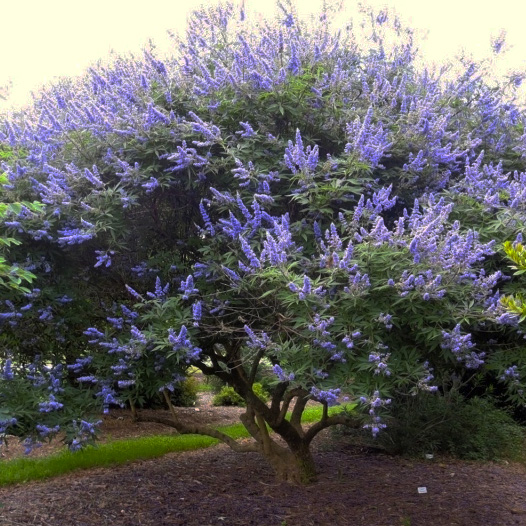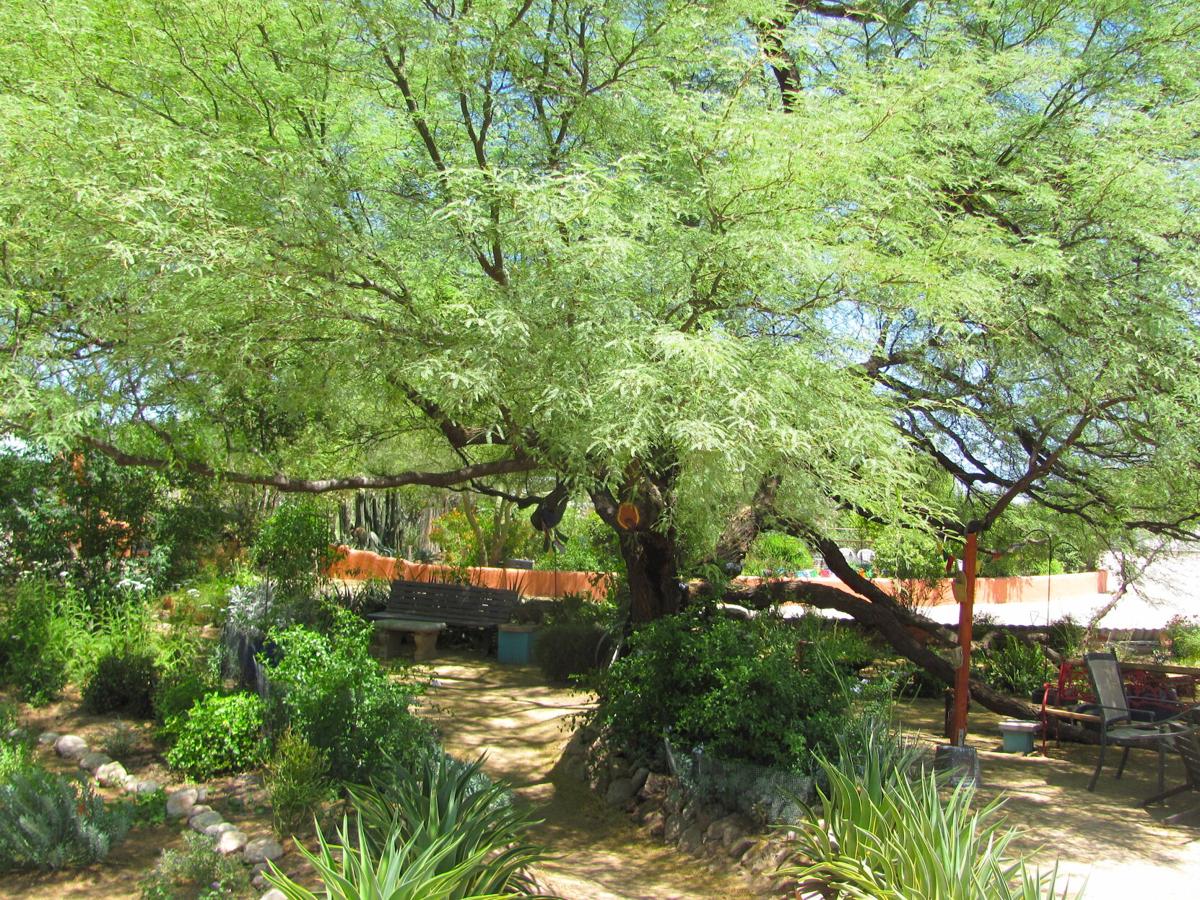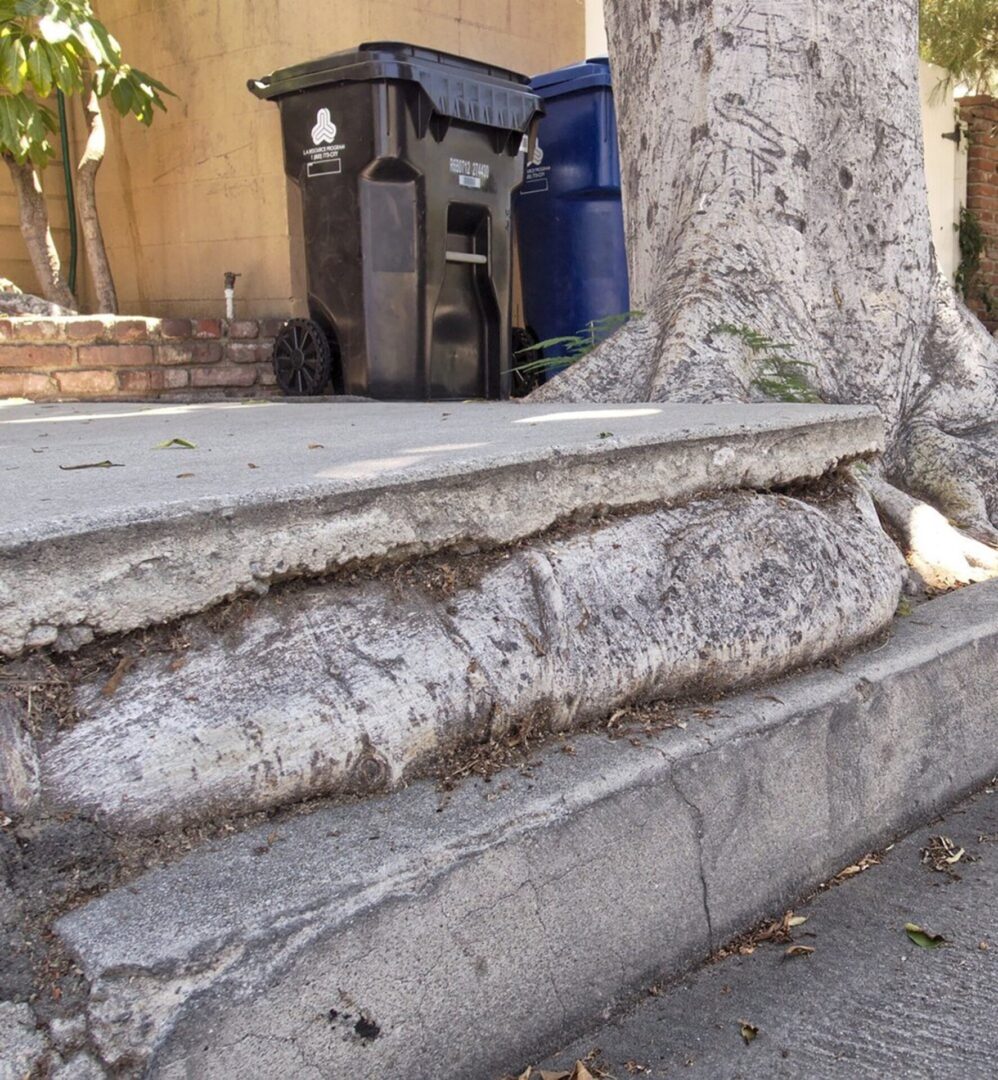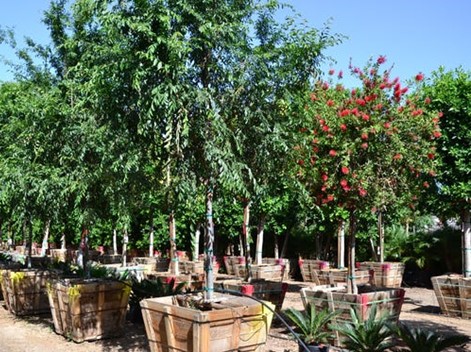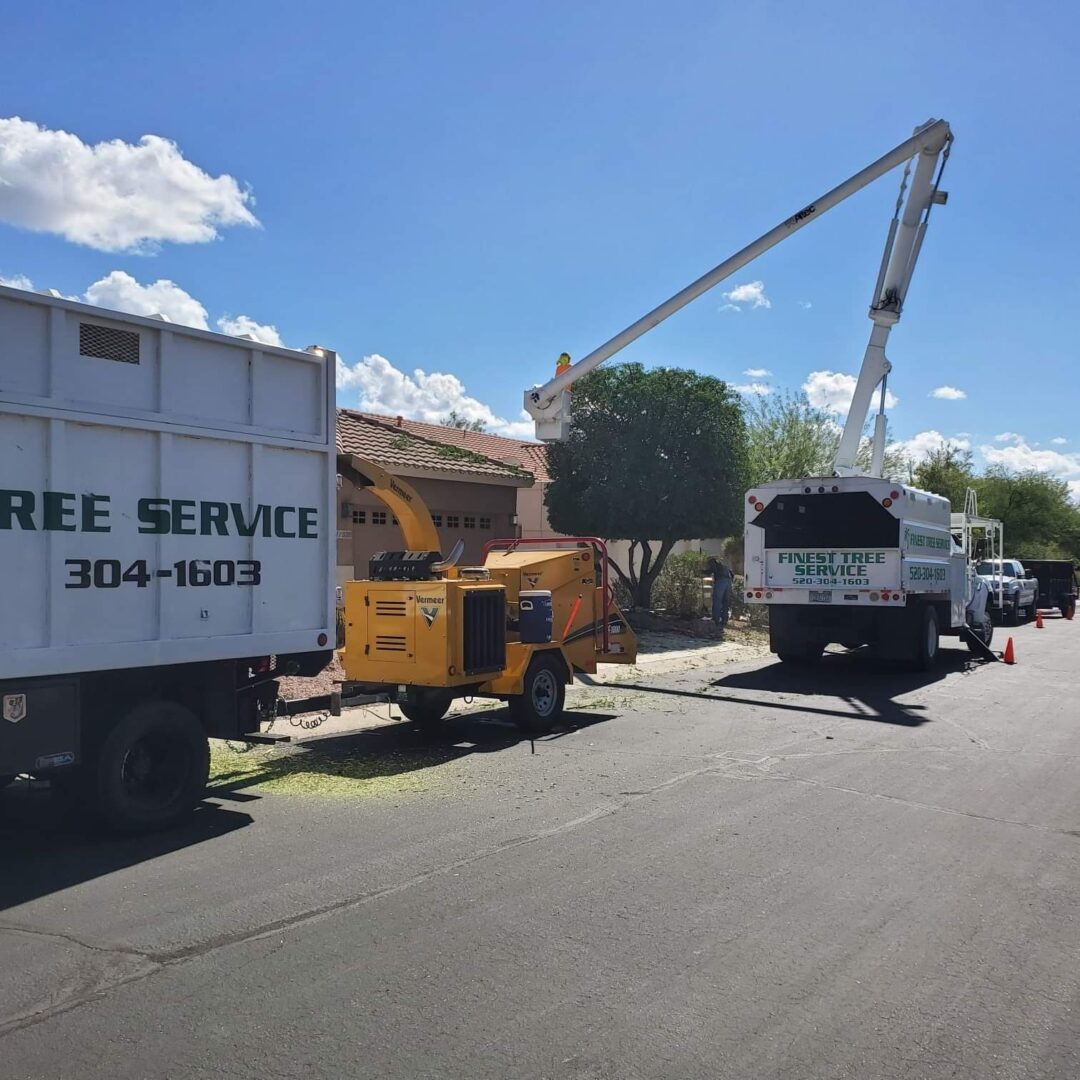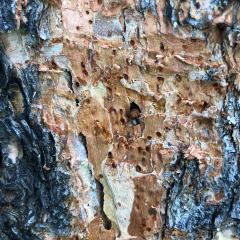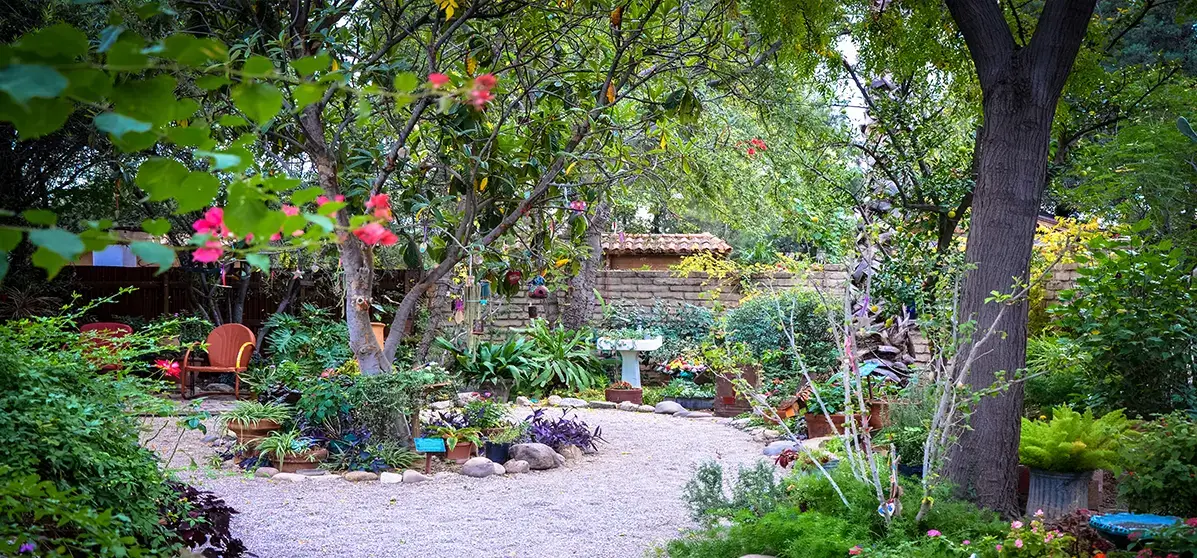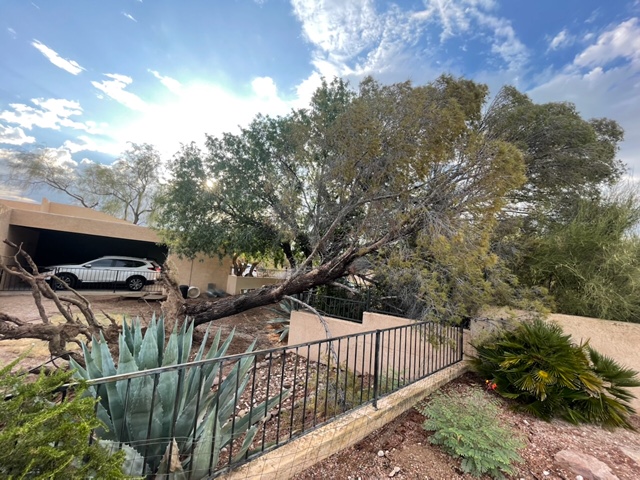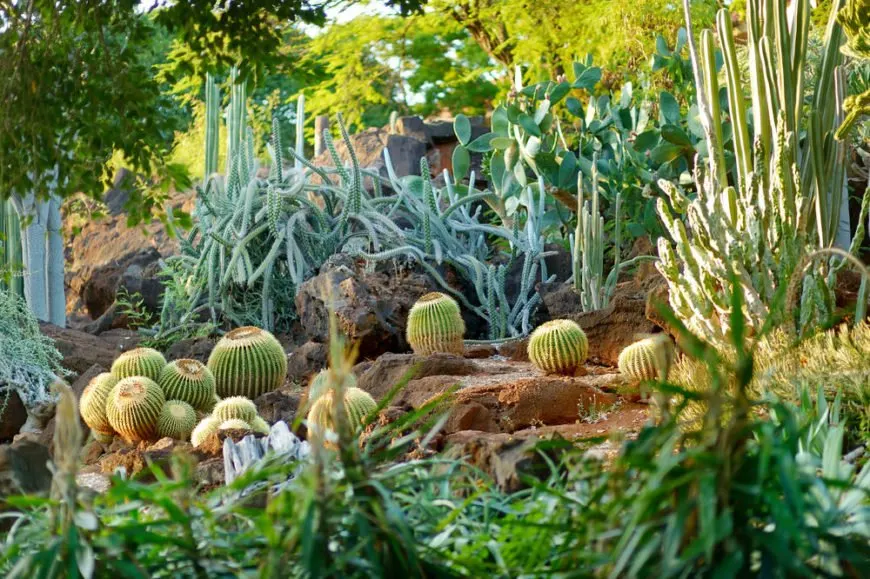The Vitex, or Chaste tree, is a lovely multi trunked small tree and is easily identified by its lilac purple flowers that bloom during the summer. A native to southern Europe, the trees blossoms attract butterflies and are considered low maintenance. They do drop their blooms, as well as the leaves will drop during the winter. While it is a very drought tolerant tree, its health and growth rate will benefit from a regular watering schedule, especially during the summer. Contact your local nursery to see if they carry this spectacular tree to add this to your landscape.
Author: finestblogger
When Is The Best Time To Trim Your Trees
The best time to prune deciduous trees are in the winter months, ideally from December through February. However, many people prune their trees throughout the year. Citrus trees should be pruned after mid-February, to avoid frost damage. Other fruit trees such as apple, peach, nectarine, apricot and nuts can be pruned in a way to dictate the height of the fruit-bearing branches, this can keep the fruit from being too high in the tree when you’re ready to harvest the fruit. You should avoid trimming trees that are sensitive to frost or sun during winter and summer months. Types of trimming to avoid are topping or “Lion’s tailing”, as this will make your trees more vulnerable to wind and sun damage. You should never trim back more than 25% of your trees as this can throw your tree into shock making them susceptible to disease. Most desert species should be trimmed during spring or fall. Trees such as Mesquites and other vigorous desert trees will benefit from spring or early summer trimming to prevent damage during the summer monsoon storms and microbursts. Smaller and less vigorous desert trees that don’t require preventative monsoon trimming, can be pruned in the fall. If you prune your trees later in the year, they tend to hold their shape as growth slows down during the winter months. With younger trees, don’t cut off the lower branches too soon as they rely on those energy reserves, instead, wait for those trees to mature a bit, which will help accelerate their growth. If you’d like professional advice, we offer consultations at a fee, or call us for a free estimate at 520-304-1603.
Mistletoe Removal
You typically find mistletoe growing in large, round clusters at the tops of trees. Mistletoe is a parasitic; they steal nutrients and water from your trees. One or two clumps of mistletoe aren’t necessarily a huge concern, however they make your tree more vulnerable to adverse environmental factors such as extreme temperatures, drought, and disease and will cause your tree to decline. The best way to get rid of mistletoe is by pruning, however, removing mistletoe isn’t simply a matter of chopping down the clusters. When mistletoe grows in a tree, it extends a root-like structure, you want to remove the infected branches starting from about a foot below the mistletoe. This requires some precision, so be sure to consult Finest Tree Service before pruning. Take a look at this article from “University of California Agriculture and Natural Resources” for more information on mistletoe and here’s a quick video from “APEX” that may be useful. If you’d prefer we prune the mistletoe out of your tree, give us a call at 520-304-1603 for a free estimate.
Tree Roots And The Damage They Can Cause
Before you plant a tree, think about the root system and placement of your tree. Planting near a wall, your home or driveway, can cause damage to your foundation, plumbing, walls and even your swimming pool. If you have a mature tree close to your home, be sure that it is well-watered, so it doesn’t seek moisture elsewhere. When planting a tree, be sure to plant it approximately 20 feet from your home. If you’re planting near sidewalks or driveways, plant trees or shrubs with a smaller root ball, and plant approximately 15 feet from the pavement. If you have an invasive root near your home that you’re concerned about, or you see your pavement lifting or cracking, not all is lost, we do provide a root barrier service. Give us a call 520-304-1603 for a free estimate and we may be able to save your tree from removal, and instead, do a root barrier for you.
What Trees Do Best In The Tucson Heat
I’m a transplant to the Tucson area. When we purchased our home there were an abundance of trees and cactus on our property. If I could choose the trees I want, I wouldn’t necessarily choose a mesquite, which we have several of. Although nice for the shade in the summer, there are other trees I would love to have in their place. Take a look at this list of trees on “www.tucson.com”. This article provides not just the specie of tree, but also an overview of the rate of growth, the best way to plant your tree and guidelines for tree and site selection. There are many nursery’s in the Tucson area that carry a wide variety of trees, however, if you’re on a budget then take a look at “TEP’s“ program. They have a nice variety of 5-gallon plants for $5.00. They partner with “Civano Nursery” on this wonderful program.
What Tree Service Should You Hire?
Whether you hire Finest Tree Service, or another tree professional, there are a few things you should ask. Below are tips on what you should look for and questions you should ask:
- You’ll want proof of insurance, both liability and workman’s compensation. The last thing you want to deal with, is an accident on your property during that tree work, and the company you’ve hired is uninsured.
- Please review the contract and make sure you’ve been provided those certificates of insurance, and exactly how the contract reads. What trees have been included, is it covering what you asked for, does the contract exclude anything.
- What are the terms of payment and what payment sources do you have available to you for payment, credit card etc.
- Make sure they have all of the equipment to properly do your tree work.
- Remember, the cheapest estimate isn’t always the best choice, it’s just the most cost effective, but that may not serve you well.
- Do your due diligence before hiring, what is that company’s ratings with other organizations and Google reviews.
Pine Or Bark Beetles And How To Treat Your Trees
These pesty beetles can cause havoc with your pine tree and before you realize it, they can cause enough damage that you’ll need to have your tree removed. Pine beetles burrow into pine trees to lay eggs. Once the eggs hatch, the offspring feed on the living tree from the inside. Over just a few weeks, the larvae destroy the tree’s vital systems. After several months, the tree turns red and brown as it dies. The cycle takes just one year, and the newly formed beetle is off to find their next host and begin it all again. If you’ve caught this infestation in time, you can treat your tree with “Bonide Insect Control Systemic Granules”, you can find this product on Amazon or your local hardware store. There is no guarantee this product will save your tree, but it’s certainly worth trying. You may find this “youtube video” from Solutions Pest & Lawn helpful in identifying and treating bark beetles. Beetles attack stressed trees, it’s important to do regular deep “watering” and keep your trees healthy to prevent an infestation!
Landscape Inspiration
If you’ve never been to the “Tucson Botanical Gardens”, you’re missing out. The gardens are endless and worth visiting to see what they’ve done, both planting and artistically, or to glean from their gardens some landscape inspiration. They also have a calendar of events. My favorite time to visit is during the holidays for their “Luminary Nights”. They have live music and their gardens are lit and its simply magical. They also display local artists work and have a wonderful gift shop. A must visit!
Preparing For The Monsoon Season
We all know what the monsoon brings, erratic weather and microbursts that can quickly uproot a tree and cause some pretty sever damage. Take a look at our Monsoon Tree Preparation tab on our home page for tips on what you can do to help prepare your trees for the monsoon season. If you’d like Finest Tree Service to come trim your trees to get them ready for the monsoon season, give us a call for a free estimate at 520-304-1603.
Cactus And Succulent Rescue
I’m a pretty big fan of rescuing plants, of any type. I’m particularly fond of cactus and succulents. I’m a transplant to the Tucson area and find cacti fascinating. For those of you who love cactus as I do, there’s a group of folks at “The Central Arizona Cactus and Succulent Society” who have a rescue service and plant sale. The fee to become a member is very reasonable and gives you access to a few things that the public don’t have access to, however the sale is open to the public. Take a look at their website for details.


